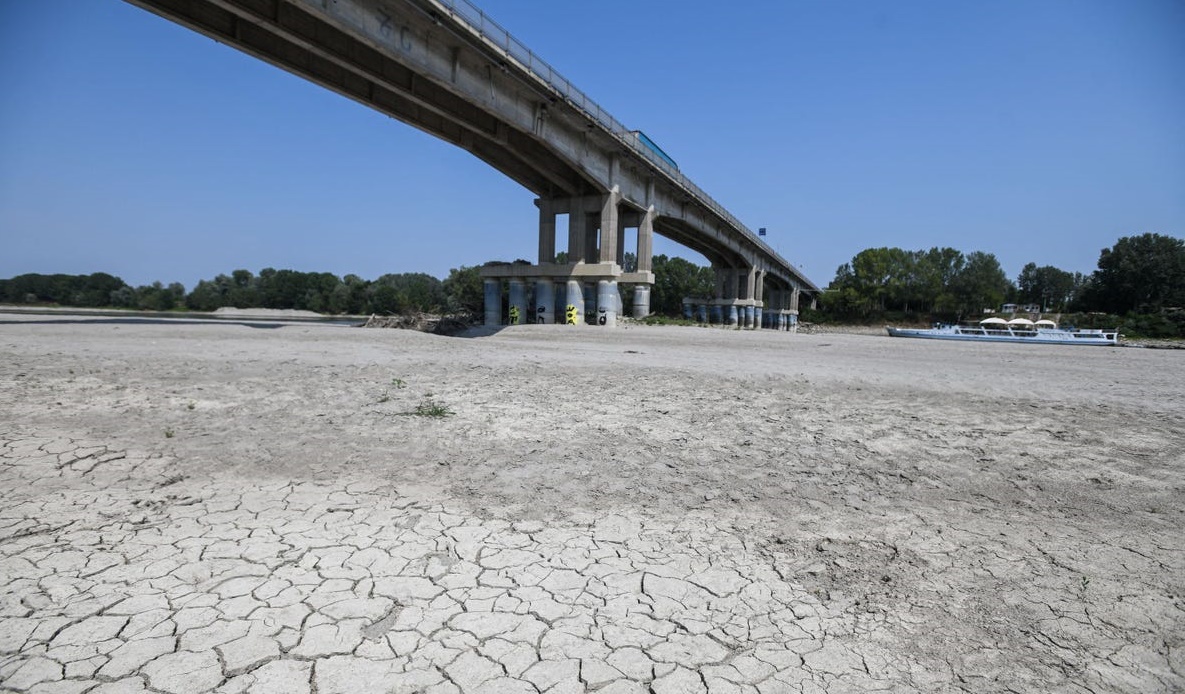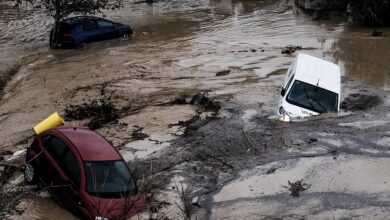
Google images of the Po, Italy’s longest river, and you’ll see a wide stream surrounded by a green oasis. But at the moment the river, which is supposed to supply almost all of northern Italy with water, is virtually dry. The Arno, which flows through Florence, and the Tiber in Rome are also considerably lower than normal.
The worst drought in 70 years has enormous consequences for agriculture, for citizens and for nature. The government has approved applications from five regions to declare a state of emergency: Emilia-Romagna, Friuli-Venezia Giulia, Lombardy, Piedmont and Veneto. This creates more options for taking measures and compensating victims.
Po is dry
The biggest concerns are the drought in the valley around the Po, which runs from the Alps in the west to Venice in the east. Because there was little snow in the mountains last winter, the meltwater supply has dried up much faster than normal. In addition, it rained little in the spring. The water level of the Po is now 80 percent lower than usual at the beginning of the summer.
This will undoubtedly be a serious blow to the Italian economy. More than half of Italy’s agriculture is practiced in the otherwise fertile Po Valley, accounting for 40 percent of gross domestic product. Not only crops such as wheat, rice and maize are dependent on the river, but also products such as Parma ham and Parmesan cheese. Three quarters of the vongole shells for the European market are harvested in the Po Delta. They also grow less quickly due to the drought.
Now that the government has approved the request for a state of emergency, money will be released to compensate farmers for their losses. According to agricultural organization Coldiretti, this is necessary to save more than 270,000 companies. The organization estimates that there is already about 3 billion euros in damage.
Water use limited
Not just farmers; everyone in northern Italy is facing the drought. More than a hundred municipalities in the north have already imposed restrictions on the use of drinking water. Capital Rome decided to lower the water pressure. Under the state of emergency, regions can take action on an even greater scale.
There are currently no specific restrictions for tourists in the affected areas. The regions of Lombardy, Piedmont, Veneto and Emilia-Romagna are considering water rationing. This would mean that drinking water should only be used for essential activities and not, for example, to fill swimming pools. Water parks close to the coast are advised to use filtered seawater. Others may have to close their doors.
Extraordinary Commissioner for Drought
In addition to approving the state of emergency, the government is also launching a national emergency plan to deal with the drought. “The Council of Ministers will take important and courageous decisions,” regional affairs minister Mariastella Gelmini announced in advance. For example, there will be an ‘extraordinary commissioner for the drought’. He will be appointed until 2024 to ensure that the country is better prepared for crises in the future.
The Commissioner must not only limit water consumption in Italy, but also make the water network more efficient. Nationally, only 10 percent of the precipitation is currently stored and used during dry periods. Because the water network is old in many places, more than 30 percent of the available drinking water leaks out before it reaches the tap. The government is allocating $1.38 billion to tackle that problem.
These measures have come too late for the current crisis. In the coming months, it is not expected that there will be enough precipitation to turn the tide.




